The Palace of Westminster is one of the most recognised buildings in the world. Join us as we explore the chambers of this magnificent landmark.
The Palace of Westminster © Ian Shaw/AlamyThe Palace of Westminster: a Gothic jewel on the Thames that is the home of British democracy. One of London’s most iconic buildings, with its elaborately carved sandy-coloured façade and famous clock tower, it’s perhaps better known as the Houses of Parliament. Millions have admired its architecture from viewpoints both north and south of the river. But imagine exploring its interior: rooms that echo with the history of centuries of British rule and chambers in which politicians debate decisions that can alter the direction of the nation.
The building dates back to the reign of King Canute, who constructed a royal residence here in 1016, but a tour begins in Westminster Hall, built in 1097. The Hall is a minor miracle, having survived both the Great Fire of 1834, which destroyed most of the Houses of Parliament, and heavy bombing during World War II. Its proportions are immense and its striking hammer-beam timber roof is the largest medieval unsupported roof in northern Europe.
The ancient Hall
Westminster Hall was used as a law court from the 13th century until 1882. Trials held here include that of William Wallace (1305), leader of the Scottish resistance against English oppression, and Guy Fawkes, who was found guilty of treason and executed in 1606 for attempting to blow up the Houses of Parliament. Members of the Royal Family lie in state here, most recently The Queen Mother in 2002. But the Hall also welcomes the living: world leaders including HM The Queen, Barack Obama, Nelson Mandela and Aung San Suu Kyi have delivered speeches here.
Although the Hall is the oldest part of the Palace, certain elements were added later, and Richard II remodelled its walls in the 14th century. Seek out a small square excavated in the wall near the ceiling; it reveals the original stonework nestled within the newer structure. Take time, too, to admire the old stonework nearby in what was once the stable block but is now the Jubilee café.
Along with Westminster Hall, only a section of St Stephen’s Chapel and the Jewel Tower survived the Great Fire of 1834. In 1841, politicians held a competition to find an architect to rebuild the Palace, with entrants instructed to submit their designs using a symbol instead of their name. The winner was Charles Barry, assisted by 20-year-old Augustus Pugin – the leading authority on Gothic architecture and style.
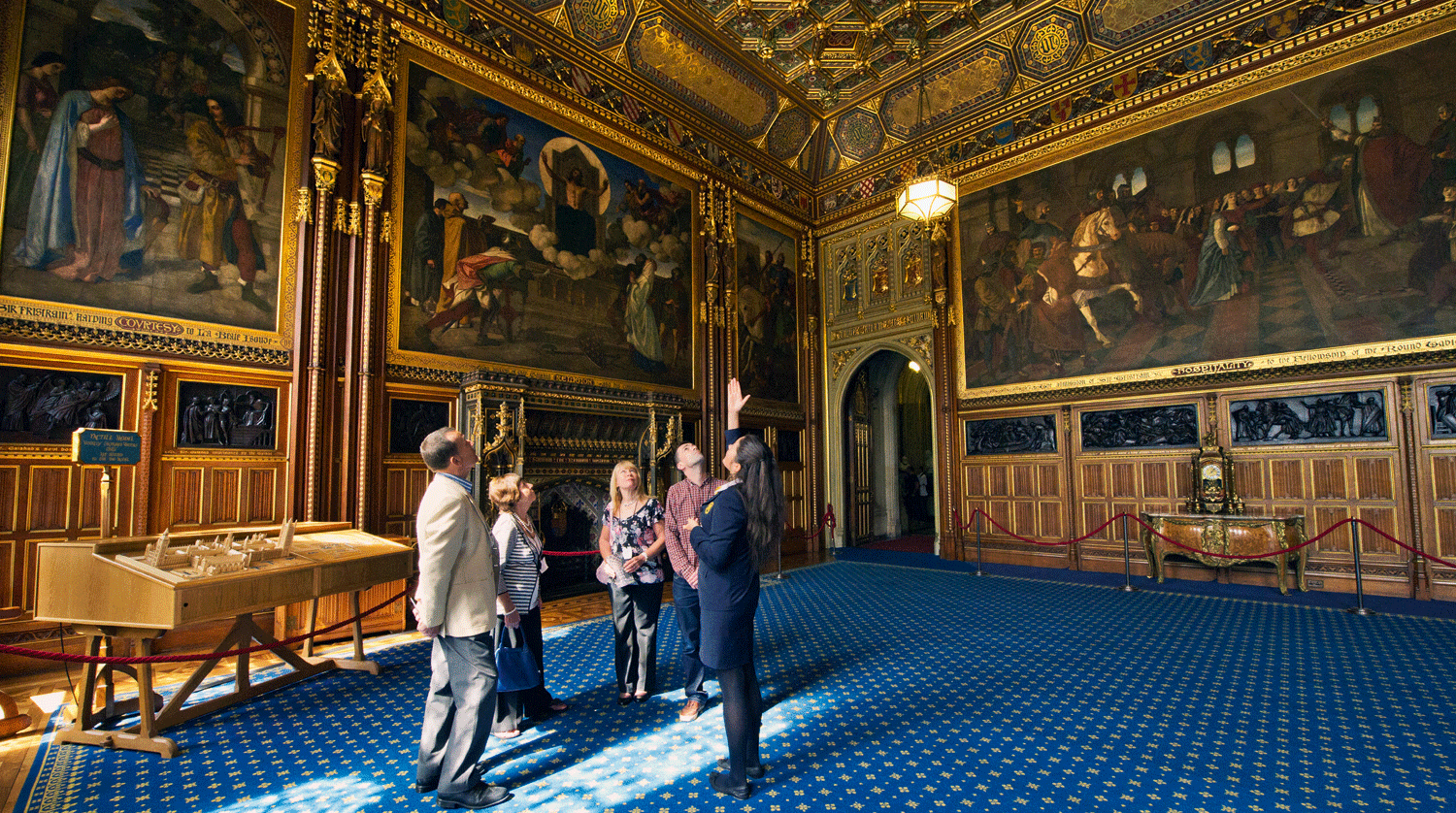
Your tour of Westminster Palace now follows in the footsteps of HM The Queen on the day of the State Opening of Parliament. The Queen has her own entrance, Sovereign’s Entrance, from where she climbs the stairs to the Norman Porch and enters the Queen’s Robing Room; it is here that the vision of Barry and Pugin comes to life. The painted wooden ceiling is decorated with motifs of royalty and Parliament in rich golds, reds and blues. It is a remarkable room, filled with symbolism, of which the most recognisable is the Portcullis – the symbol Barry used on his entry, which is now the logo of the Houses of Parliament.
We trace The Queen’s steps from the Robing Room into the 33.5m-long Royal Gallery, dominated by two imposing frescoes depicting British victories in the Napoleonic Wars: the battles of Trafalgar and Waterloo. Yet here is a reminder that we are in the 21st century and a working environment – the room houses a collection of TV screens (red for the House of Lords and green for the House of Commons); these are the annunciators, which inform members what is being debated.
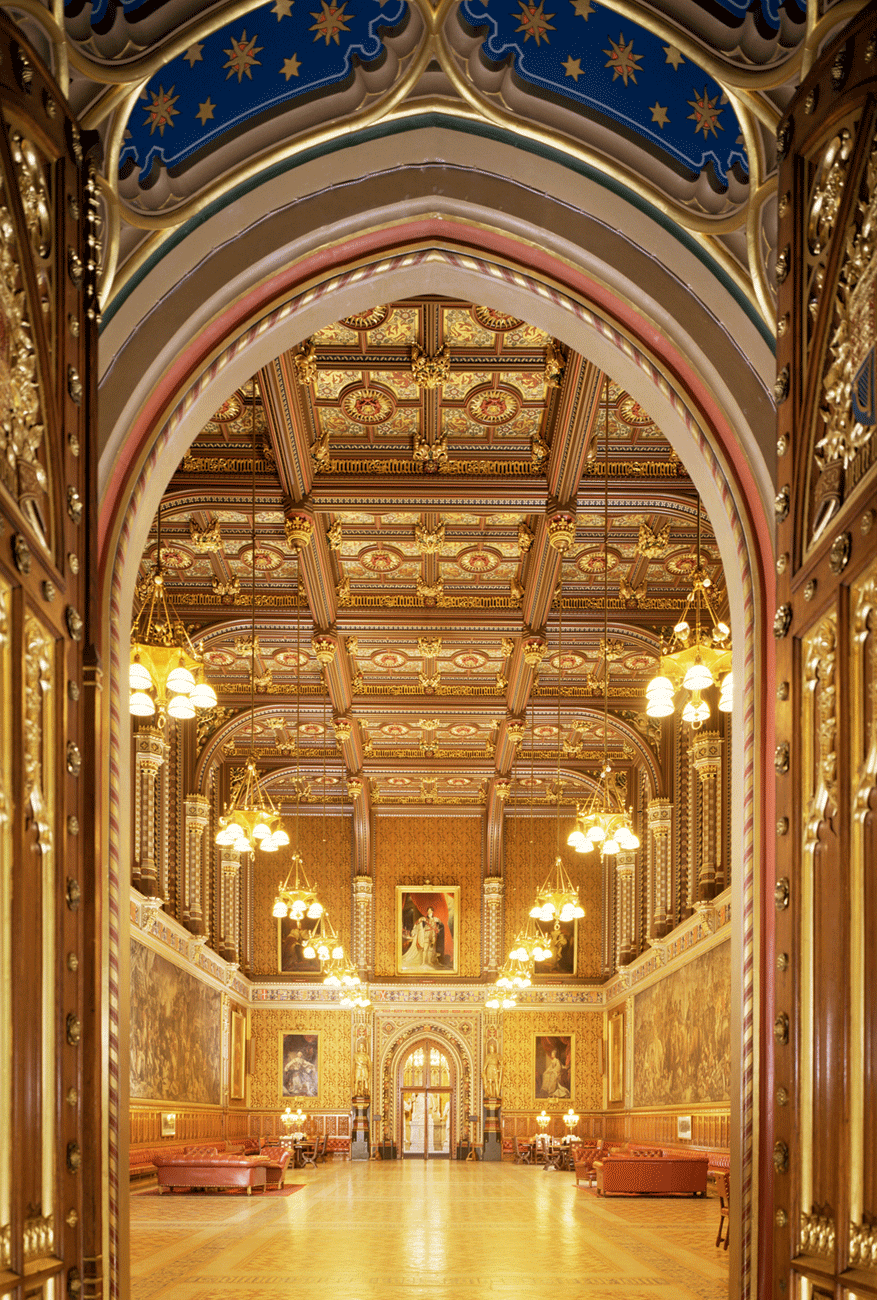
From the Royal Gallery, the tour takes you to the Prince’s Chamber, a smaller but no less impressive room, framed with images of Henry VIII and his six wives. Linger here and take time to enjoy the recent addition of paintings depicting the Spanish Armada, before heading to the showpiece of the tour, the incredible Lords Chamber.
Everyone who enters the Lords Chamber lets out a gasp of amazement. Completed in 1847, it is the most ornate room in the Palace of Westminster. Designed by Pugin, it is festooned with complex wooden carvings and rich red leather, all lit by cathedral-sized stained-glass windows, which cast a rainbow of colours over the gold-leaf decoration. Surrounding this chamber is the public gallery where anyone can sit to watch a debate. The only simple element of this room is the square wool-stuffed cushion at its centre. This is the Woolsack, where the Lord Speaker sits – a tradition dating back to the 14th century to emphasise the economic importance of the wool trade at the time.
Behind the Woolsack is Black Rod’s Mace. The Mace represents the monarch. A formal procession is performed each day, with Black Rod leading the Members into the Chamber and placing the Mace in the House of Lords. Next door, in the House of Commons, the Serjeant at Arms carries out the same role. Yet despite this rich history, times do change. Until 60 years ago the House of Lords consisted of all-male and all-hereditary members, but this is no longer the case. Of the 830 members today, only 92 are hereditary and 181 are women.
Tour the chambers
Here our path breaks away from that of The Queen, for no monarch since Charles I has entered the House of Commons. Separating the House of Lords from the House of Commons are the Peers Lobby and Peers Corridor, which lead into the octagonal Central Lobby. Here, carved stone statues of monarchs line each of the eight arches, and the stone-vaulted roof is believed to be the widest in existence at 18m, and a staggering 23m high. Any UK resident can come here and ask to see their MP – a process known as lobbying or, more informally, ‘green carding’.
The appearance of the Palace of Westminster changes as you enter Commons Corridor and Members Lobby – these rooms are far less ornate. Much of this section was badly damaged during bombing in 1941, but the reconstruction was so sympathetic to Barry’s original design that it’s hard to distinguish between old and new. Look closely at the arch next to the statue of Winston Churchill in the Members Lobby and you’ll see an original section, battered by The Blitz. Notice too the worn area on the door to the Commons Chamber, where Black Rod knocks three times (for God, Queen and country) during the State Opening of Parliament.
The walls of Members Lobby are lined with statues and busts of prime ministers past, and it’s said MPs used to touch the statue of Winston Churchill for good luck in their work and that of Lloyd George if they were going on a date. The rule was that prime ministers had to have been dead for 10 years before they could be commemorated with a statue. This was broken for Margaret Thatcher in 2007.
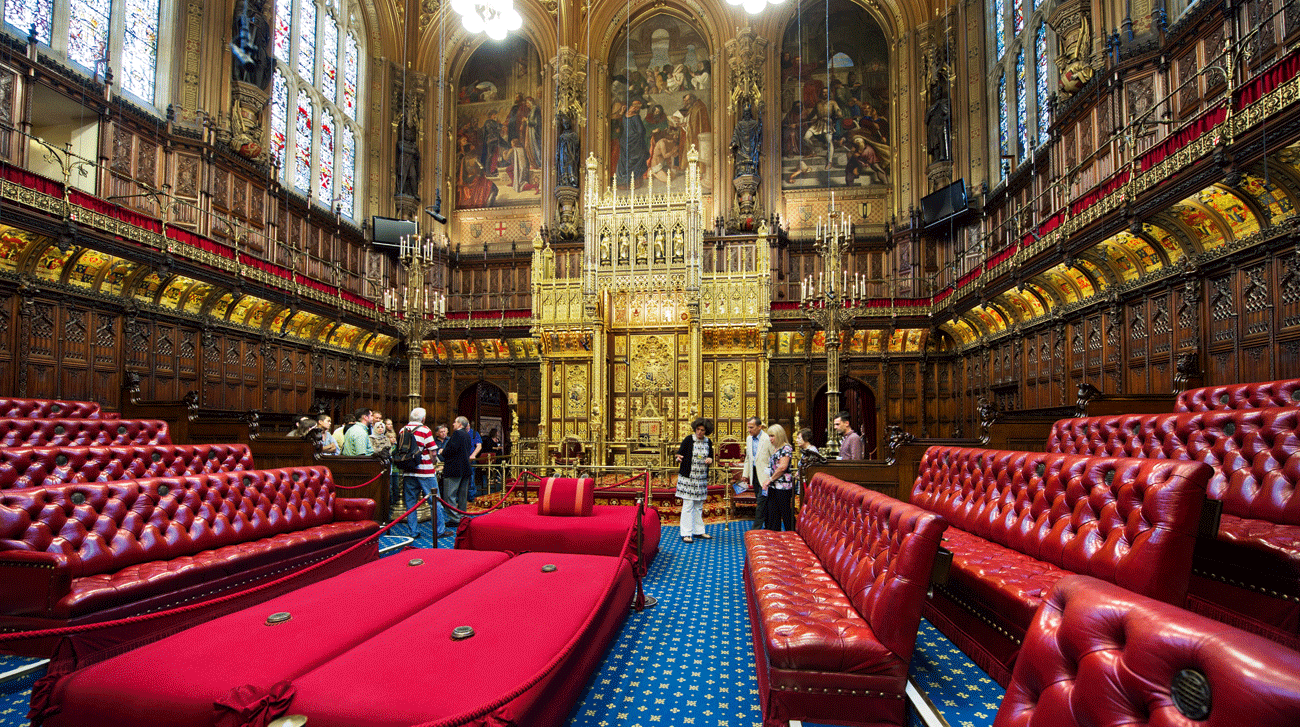
 Lords Chamber/Big Ben © Houses of Parliament 2012
Lords Chamber/Big Ben © Houses of Parliament 2012Living history
Giles Gilbert Scott was commissioned to rebuild Commons Chamber in the aftermath of World War II. Scott Junior is perhaps most famous for designing the iconic red telephone box, as well as Battersea and Bankside (now Tate Modern) power stations. His understated use of carved wood teamed with green leather in the House of Commons appears spartan in comparison with the opulent Lords Chamber.
From the clean lines of Commons Chamber, the tour moves into St Stephen’s Hall – the original site of the House of Commons from the mid 16th century until the Great Fire of 1834. The statues of parliamentary orators that line the Hall are a reminder of its earlier usage. Look out for a damaged spur on the back of one statue’s boot; this was snapped off by a suffragette during a scuffle and has been left broken as a reminder of women’s fight for the vote.
Now back in Westminster Hall, our guide Mark Cullen tells us the tale of King George IV’s coronation banquet. As part of the ceremony, the King’s Champion rode in on a prize stallion. Since it was considered bad mannered for the horse to show its rear to the king, a circus horse, trained to walk backwards, was used. Unfortunately, this particular horse would only walk backwards, much to the horror of king and court. Mark’s closing story is as memorable as the tour itself and, now back where we started, our exhilarating tour comes to an end.

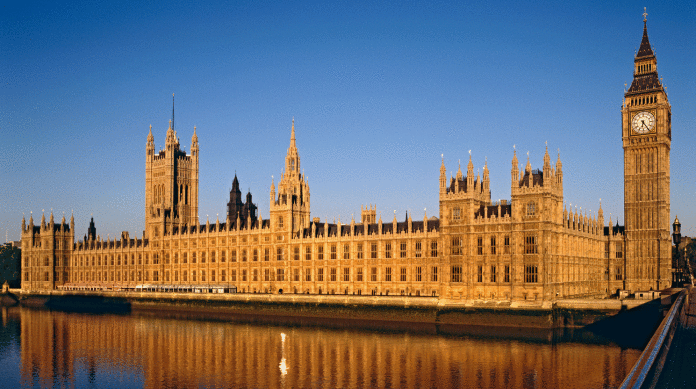
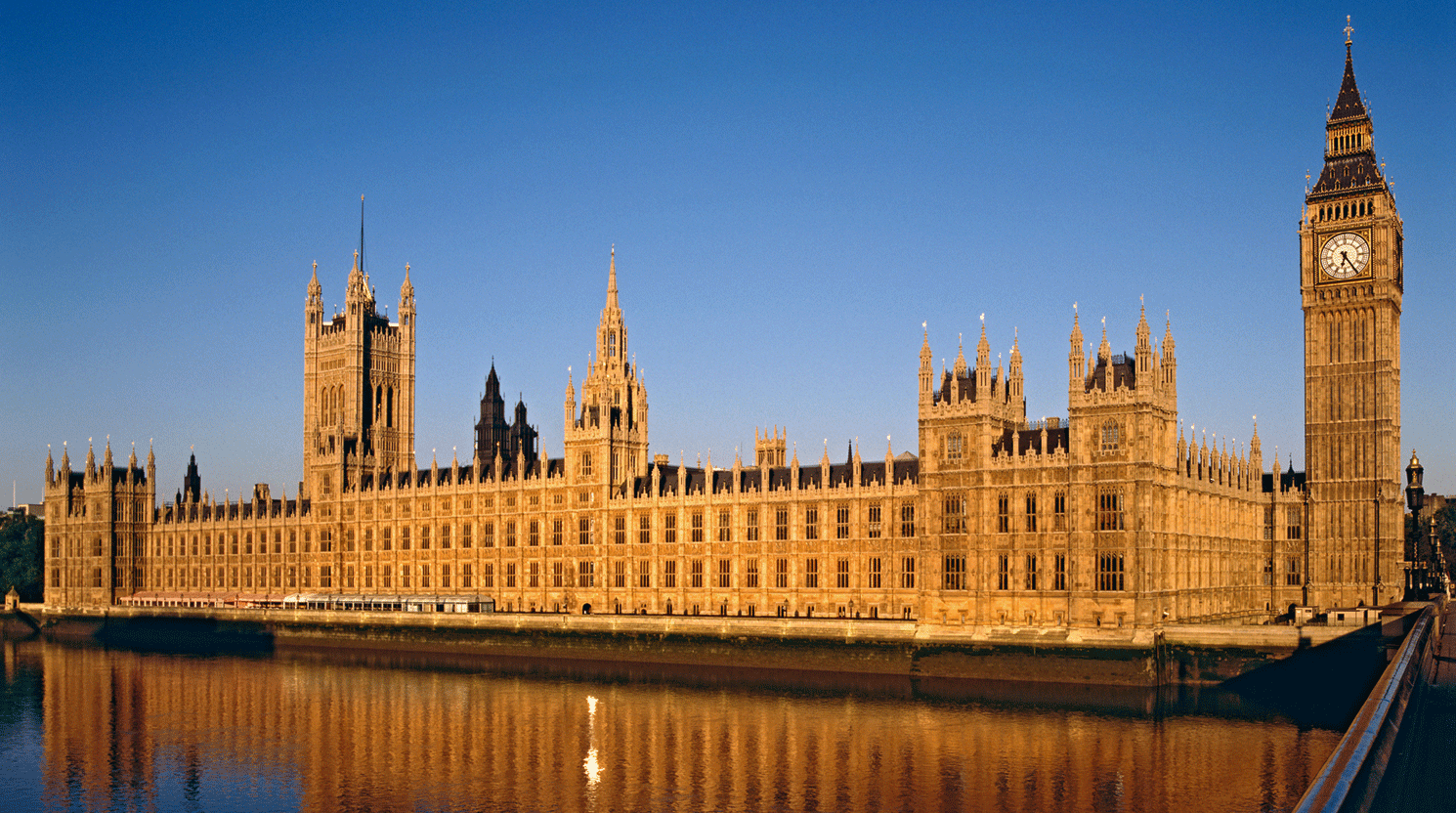

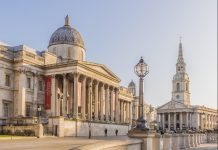


 © 2024
© 2024